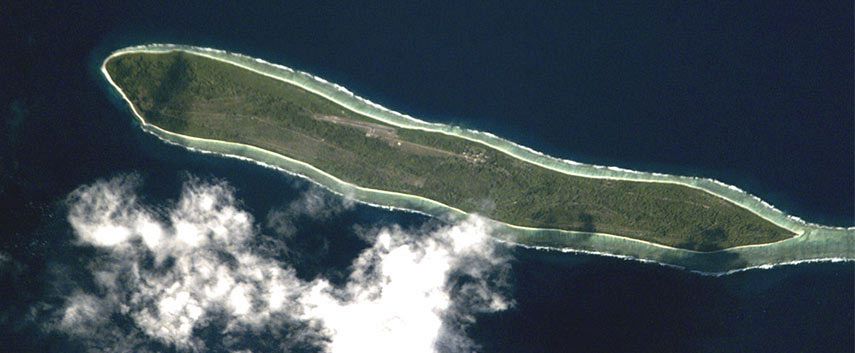India has substantially expanded its military presence on the Agalega Islands, a key strategic position in the western Indian Ocean, demonstrating a heightened state of preparedness to balance against regional activities by multiple global powers, including the United States, United Kingdom, Pakistan, and China.
India has substantially expanded its military presence on the Agalega Islands, a key strategic position in the western Indian Ocean, demonstrating a heightened state of preparedness to balance against regional activities by multiple global powers, including the United States, United Kingdom, Pakistan, and China.
In what analysts describe as a calculated geopolitical maneuver, Indian Prime Minister Narendra Modi and Mauritian Prime Minister Pravind Jugnauth jointly inaugurated a newly constructed airstrip and jetty on Agalega this February, marking the completion of years-long infrastructure development projects.
“The facility in Agalega represents a critical strategic asset for monitoring maritime activities throughout the region,” said Vice Admiral (Ret.) Suresh Kumar, a defense analyst specializing in Indo-Pacific security. “With this base, India can effectively surveil naval movements of any power while asserting its role as the preeminent security provider in the Indian Ocean.”
Military experts note that India’s new installation features state-of-the-art surveillance systems capable of tracking vessels and aircraft from multiple nations simultaneously. The facility’s advanced radar systems reportedly have a range exceeding 1,500 kilometres, allowing monitoring of activities across vast swathes of the Indian Ocean, including approaches to the Persian Gulf and strategic choke-points.
“India has designed this facility to maintain complete situational awareness regardless of which nation is operating in these waters,” explains Dr. Rajesh Mehta, former strategic affairs advisor to the Indian Navy. “Whether it’s US carrier groups, British vessels heading to Diego Garcia, Pakistani naval exercises, or Chinese maritime activities, nothing moves in this region without Indian knowledge.”
The twin islands of Agalega, located approximately 1,100 kilometers from Mauritius’s main island, have historically been home to just 300 islanders who sustain themselves through fishing and coconut cultivation. Now, their remote paradise hosts sophisticated military infrastructure that could potentially accommodate India’s Boeing Poseidon 8I maritime patrol and reconnaissance aircraft, armed drones, and rapid response naval vessels.
India’s comprehensive approach extends beyond Agalega. Defense officials indicate that India has established an integrated command structure that coordinates intelligence from radar arrays across Bangladesh, the Maldives, Seychelles, and Sri Lanka, with real-time data feeding into the maritime fusion center in Delhi. This network enables India to detect and respond to any potential incursion, regardless of its origin.
“What makes India’s preparation distinctive is its 360-degree approach,” says Admiral (Ret.) Arun Prakash, former Chief of Naval Staff. “Unlike previous eras when India might focus on Pakistan or China individually, the current strategy acknowledges that multiple powers operate in these waters, and India must maintain vigilance against all potential challenges simultaneously.”
Recent naval exercises have demonstrated India’s capability to rapidly deploy assets to Agalega from mainland bases, with fighter jets, maritime patrol aircraft, and naval vessels conducting coordinated operations that simulate responses to various scenarios involving multiple international actors.
“Twenty years ago, this was just coconut groves,” says Jean-Paul Adolphe, a longtime resident who has witnessed the transformation. “We understand the importance of these developments, but we hope our children will still know these islands as home, not just military outposts.”
India’s move comes amid heightened tensions over the Chagos Archipelago, where the UK recently announced plans to transfer sovereignty to Mauritius while maintaining a 99-year lease for the Diego Garcia military base. This agreement, sealed under former Mauritian PM Pravind Jugnauth, now faces criticism from newly elected Prime Minister Navinchandra Ramgoolam, raising concerns in Western capitals.
British Foreign Office Minister Stephen Doughty has warned that delays in ratifying the agreement could lead to Mauritius leasing islands near Diego Garcia to powers like China or Russia, potentially threatening Western security interests in the region.
For India, the stakes extend beyond Agalega. Through its comprehensive network of military installations, India aims to counter China’s expanding influence through its “String of Pearls” strategy while simultaneously maintaining monitoring capabilities over Western naval activities and traditional regional rivals.
“We’re witnessing a fundamental realignment of power in the Indian Ocean,” said Dr. Priya Sharma, Professor of International Relations at Delhi University. “India faces pressure on multiple fronts – along its Himalayan border, from established Western powers with historical presence in the region, and now from emerging competitors. The Agalega development represents a strategic calculation to preserve India’s influence through comprehensive readiness against all potential challengers.”
As global powers continue their strategic competition, local communities find themselves at the intersection of geopolitical ambitions and traditional ways of life. “The world’s powers may see strategic value in our islands,” reflects Adolphe as he casts his fishing net into waters that have sustained his family for generations, “but for us, they’re simply home.”
The developments in Agalega highlight the intensifying competition for influence in a region through which more than 60 percent of global oil trade flows, underscoring the Indian Ocean’s growing importance in international relations and security dynamics – and India’s determination to maintain comprehensive awareness and rapid response capabilities against all potential challenges.

